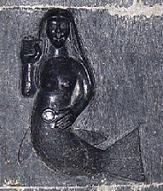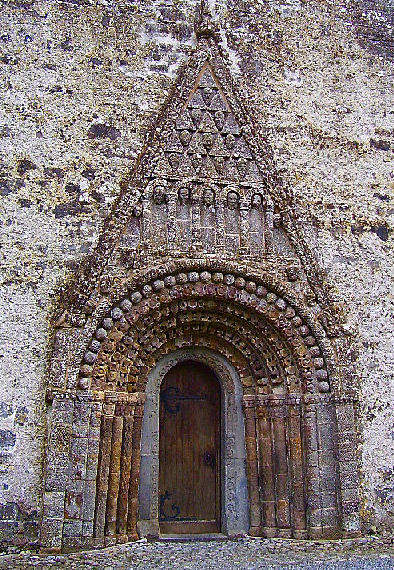
LIFE AS MYTH
![]()
JOURNAL
![]()
JOURNAL 2007
![]()
Following a white hart
Exploring myth & meaning
![]()
AUTUMN 2007
Following a white hart
Index 2007A fool, a cup, and a wounded fisher king
St. Brendan and the mermaid at Clonfert
![]()
LIFEWORKS
![]()
ATLAS
![]()

AUTUMN 2007
ST. BRENDAN AND THE MERMAID AT CLONFERT
Situated on the grounds of the 6th Century monastery founded by St. Brendan, his namesake cathedral is the oldest church in Ireland with an unbroken history of public worship. At one time Clonfert was a noted seat of learning with 3000 monks in residence. During the reign of Queen Elizabeth, it was a proposed location for the university which later became Trinity College, Dublin.
In modern times, religious services occur only every month or so, usually when a priest comes to the parish as part of a rotating schedule. In between visits, the church is locked and in order to view it, you have to get the keys from the couple that live in a cottage adjacent to the church grounds.
There are two particularly notable architectural features. One is the ornately carved Romanesque doorway. The other is a pagan icon, found in the church, which might be linked to the mythology surrounding St. Brendan.
According to Celtic legend, St. Brendan (also known as Brendan the Voyager), accompanied by a large group of monks, sailed off in search of a mythic island paradise. After seven years, they reached The Isle of the Blessed, or Terra Repromissionis, an island paradise with lush vegetation. Brendan's narrative of the island makes the location difficult to determine. One interpretation supports a location not far off the west coast of Ireland. Another places the island further south, making it synonymous with the ancient "Fortunate Isles".
The maritime based mythology surrounding St. Brendan might explain the presence of a mermaid at Clonfert (installed next to the pulpit). It is not unusual in Irish myth and iconography for pagan and sacred traditions to exist side by side and to inform each other. However, what the mermaid represents in this particular context is not known.

Romanesque doorway and mermaid of Clonfert Cathedral. Clonfert, Ireland.

